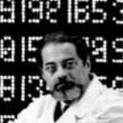Training For Hypertrophy?
-
Quem Está Navegando 0 membros estão online
- Nenhum usuário registrado visualizando esta página.
-
Conteúdo Similar
-
- 84 respostas
- 69295 visualizações
-
- 10 respostas
- 281 visualizações
-
- 17 respostas
- 14247 visualizações
-
- 20 respostas
- 3374 visualizações
-
- 25 respostas
- 19335 visualizações
-







Posts Recomendados
Crie uma conta ou entre para comentar
Você precisar ser um membro para fazer um comentário
Criar uma conta
Crie uma nova conta em nossa comunidade. É fácil!
Crie uma nova contaEntrar
Já tem uma conta? Faça o login.
Entrar Agora